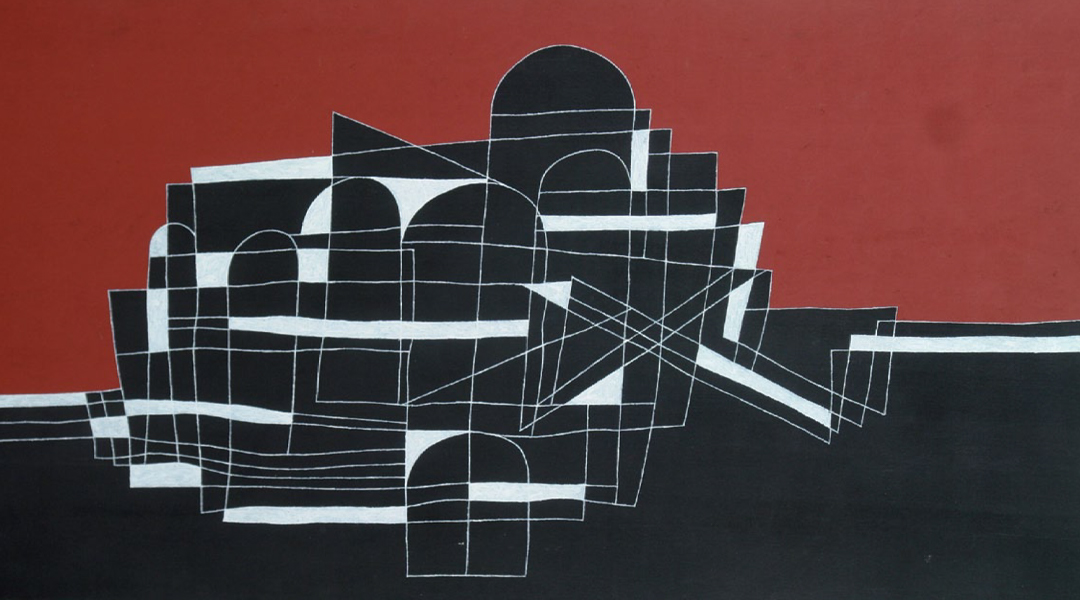
Arturo Luz and the language of Philippine Modernism
“My work is linear or geometric, and that’s it, essentially. I cannot imagine myself going conceptual or surrealistic tomorrow.” – Arturo Luz, 1973
One of currently six National Artists for visual arts of the Philippines whose works belong definitively to the Modernist aesthetic persuasion, Arturo Rogerio Luz is distinct for his consistency and discipline of artmaking. This can be seen in his trademark use of human figures, still life objects, and landscape motifs in a highly simplified and starkly rendered body of work, reducing what one can observe in nature into lines, planes, and bold colors. This body of work has so far spanned an unprecedented sixty years of consistency, defined only by the distinct use of motifs or materials over the decades: still life and genre paintings during the early 50s; paintings of the circus and the city in the late 50s and 60s; geometric sculptures from the late 60s to the late 80s; and a recapitulation of landscapes, human figures, and geometric abstractions in both painting and sculpture since the 90s.

Arturo Luz’s voluminous artistic production, remarkable in itself, should also be seen in the light of his impact on Philippine Modernism, as a curator and designer. Being the founding director of the Design Center of the Philippines (DCP), the Metropolitan Museum of Manila (the Met), and the defunct Museum of Philippine Art (MoPA) during the 70s, Luz was also responsible for training generations of designers and curators who would reflect his signature style of Modernist simplification in their respective professions. Despite his tight professional schedule, and his own “hobby” of maintaining Manila’s longest-running Modernist art gallery, the Luz Gallery (1961-2003), Arturo never wavered in his dedication to his art. One can still see this in his latest series of sculptures and paintings from 2008, which recapitulates his fascination for the linear and geometric abstractions that he had pioneered in the Philippines during the early 50s. With titles and themes that evoke the archaeological as well as the metropolitan, Luz’s recent works remind us that his consistency as an artist originated from his discipline as a designer, and the fullness of an artist’s life well lived.
YOU MIGHT LIKE: Denovo store, a diamond mine abstraction by Jagnus


Arturo Luz was born on November 29, 1926. He finished a Diploma in Art from the California College of Arts and Crafts in Oakland in 1950 and subsequently attended further studies at the Brooklyn Museum Art School and the Academie de la Grande Chaumière in Paris. Upon returning to the country during the early 50s, Arturo became a consistent winner of the AAP Annual Art Competitions, eventually becoming a one-term President of the AAP itself in 1952. Receiving the Republic Cultural Heritage Award in 1966, and the French government’s Order of Chevalier des Artes et Lettres in 1978 (subsequently elevated to Officiel in 1980), Luz was honored with the National Artist Award in 1997.
READ MORE: LOOK: Filipino artists’ self-portraits from the Paulino Que Collection
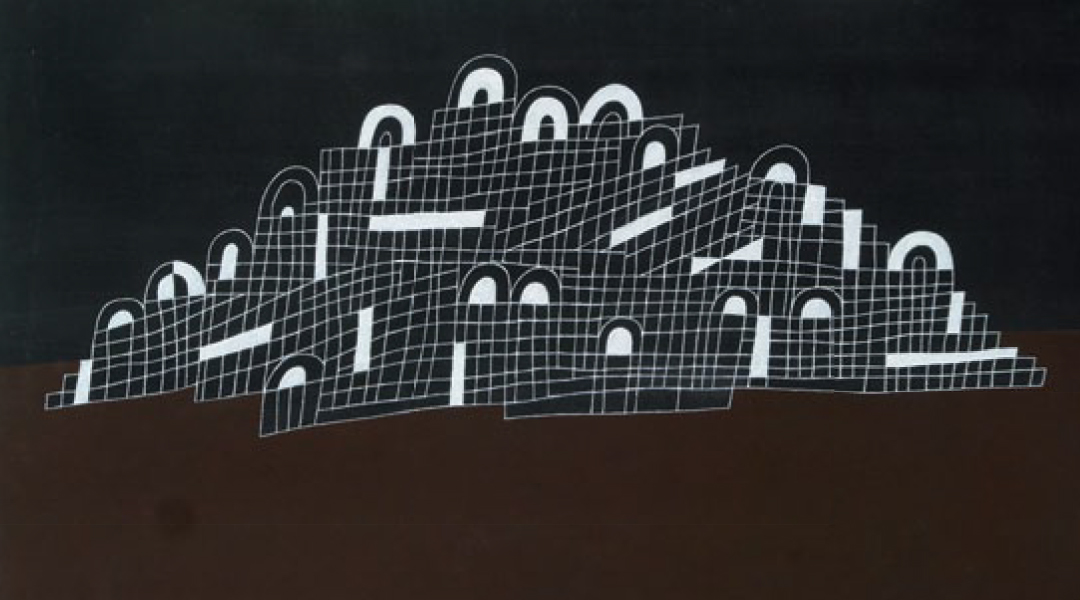
It was Arturo’s international background in design that allowed him to visualize his art in terms of spare geometries and clean lines. Studying during the height of the International Modern style in Europe and the U.S. during the late 40s, Arturo counted Fernando Zobel and Constancio Bernardo as among his compatriots and co-students at this time. They in turn would be followed by Napoleon Abueva and Jose Joya a few years later. In particular, Luz’s California schooling prepared him for his forte of painting stark, delicate lines on canvas using a pen-like stylus rather than a brush, rather like a draftsman. The motifs that he uses, such as bottles on a table in the early 50s, or acrobats from the 50s onward, and architectural landscapes in the 90s, are all based on this draftsman-like discipline.
YOU MIGHT LIKE: Iconoclast: Life lessons from Lor Calma

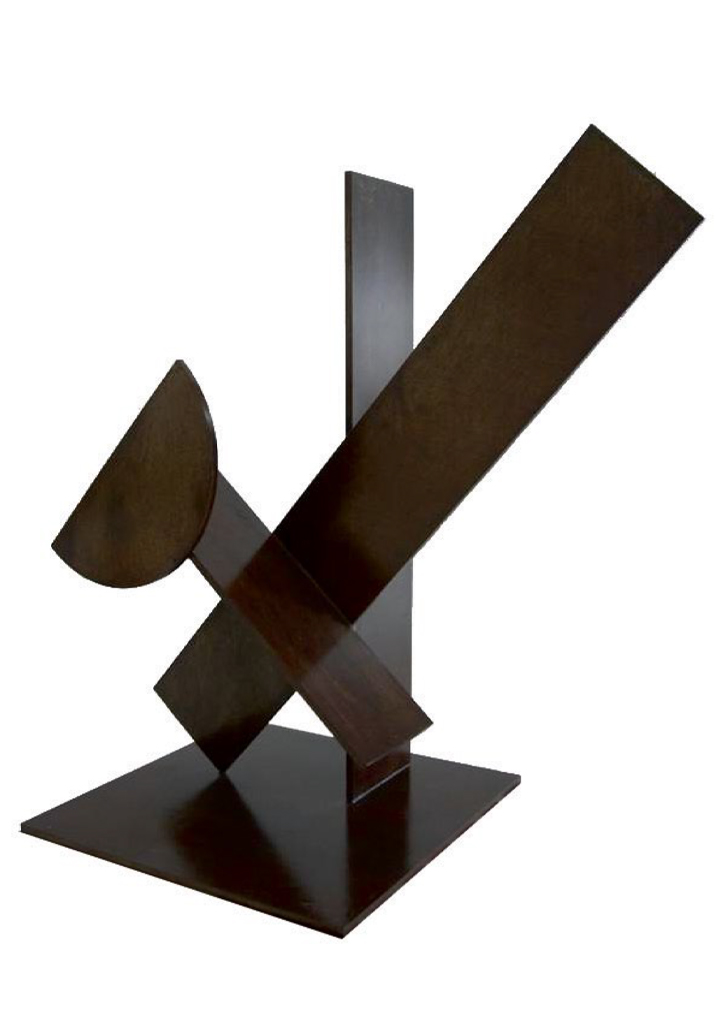
It would also be this craftsman’s context that would allow Arturo the luxury to do voluminous studies of paintings, collages, or sculptures on small scraps of paper, rather like a designer trying out a new idea using a thumbnail sketch or doodle. After hundreds of small studies stretching out over several weeks, he then selects a few final designs that meet his exacting criteria for artistic excellence, which he then either executes himself on his draftsman’s table, or in the case of sculpture, jobs them out to more competent assistants or trusted fabricators, like Claude Tayag for his wooden pieces, Impy Pilapil for his granite works, John Pettyjohn for his ceramics, or Hans Brumann and Ramon Villegas for his jewelry designs.
READ MORE: Sophisticated Folk: The Genre Works of National Artist Vicente Manansala
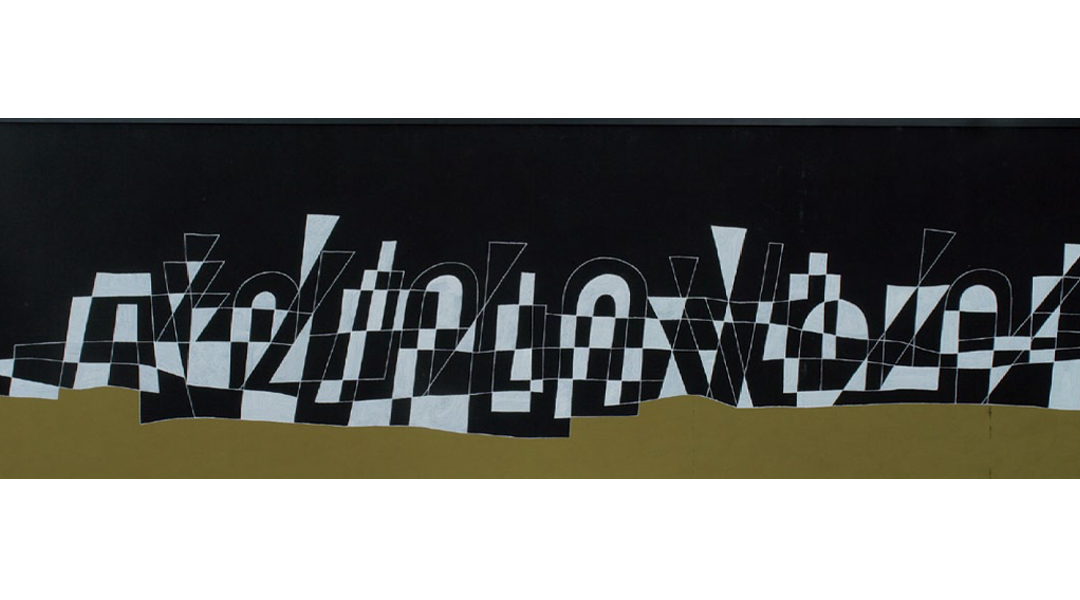
As for his artistic influences, Arturo would identify Modernist sources as disparate as Frank Stella and Roberto Chabet as his inspirations, depending on the nature or medium of his work: linear abstractions in the case of Stella and Paul Klee, Chabet’s collages, and the color simplicity of Fernando Zobel. Through Zobel, Arturo has also acknowledged the fountainhead of Spanish Modernism, such as Antonio Tapies, for profoundly altering his perceptions of art as a simplified process of meditation and material discipline. Interviewed by the art critic Cid Reyes, Arturo once revealed what was important to him as an artist:
“What is important to me (in an artwork) is its conception and completion…I went through grueling years of almost nothing but design and color, doing literally hundreds of exercises. I suppose that at the end of such training, you develop this instinct for design. It becomes second nature to you…You can sit down and analyze all inter-relations among the different shapes and colors if you wish. You can look at any object, any art, or building even, and analyze it purely in terms of design. But I don’t do this. Everything to me has become instinctive…”
YOU MIGHT LIKE: When Worlds Mutate: The Abstractions of National Artist Hernando Ruiz Ocampo
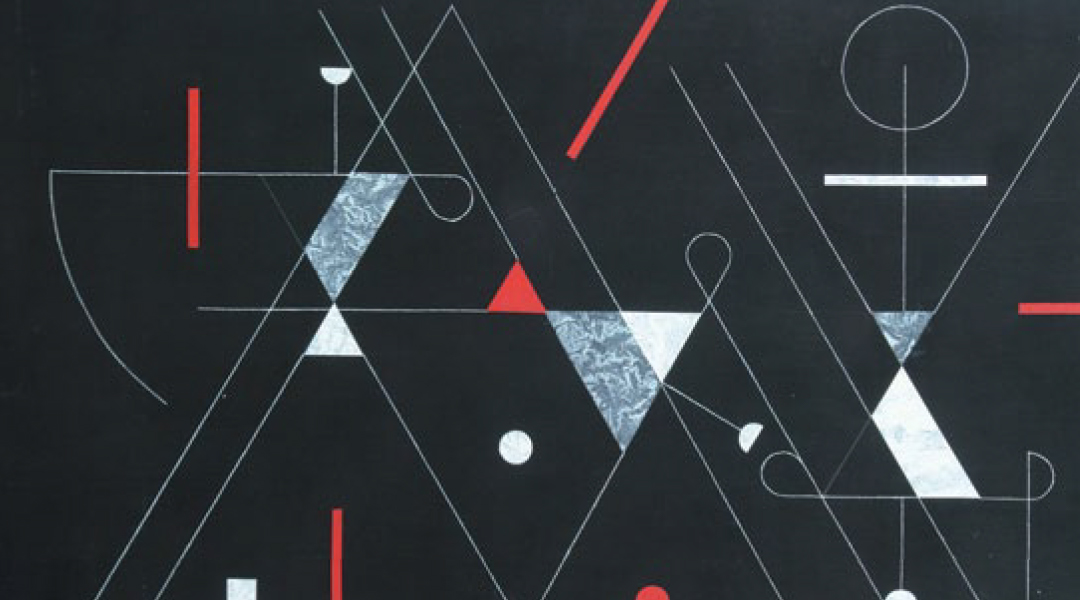
If there is an essential definition to Modern Art that Arturo Luz would adhere to, it is the notion that works of art do not exist in isolation of their environments. Rather, he sees his paintings and sculpture as co-existing within a larger space that envelope the viewer, making him sensitive to the forms and elements of his work. Thus, the preparedness of that space was also a concern that Arturo foregrounded, especially from the late 60s to the early 90s, during his project collaborations with architect and National Artist Leandro Locsin, Jr. In Locsin’s structures, such as the Cultural Center of the Philippines (CCP), the Philippine International Convention Center (PICC), the Philippine Heart Center, or the Makati Stock Exchange, Arturo would strategically emplace large mural paintings, and concrete or metal sculptures that served to interact with Locsin’s equally geometric and planar-oriented design, resulting in a harmonious whole between structure, space, and artwork.
READ MORE: Abstracting Nature: Jose T. Joya and his abstract expressionism

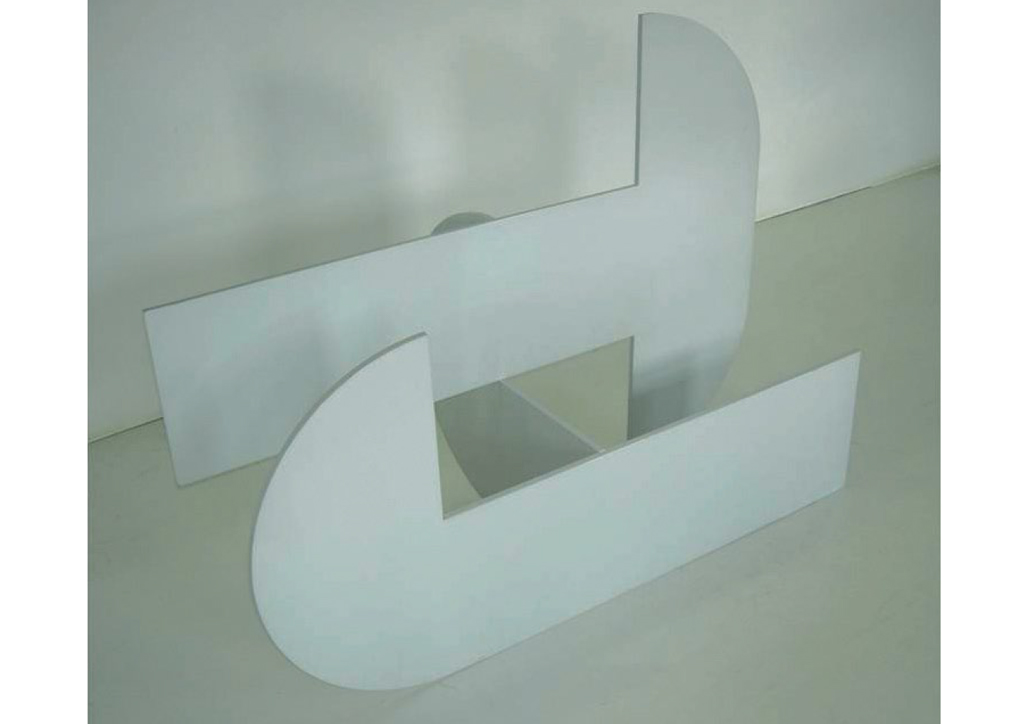
In particular, Arturo was drawn to Locsin’s trademark use of spare geometric forms like polygons, rectangular panels, square honeycomb coffered ceilings, or sharp-edged cantilevers, coupled with his use of gray or brown concrete surfaces, white walls, and black ceilings. This resulted in Arturo’s minimalist black-and-white compositions that highlighted the linear and planar aspect of both his work, as well as that of Locsin’s. One could understand this if we place a Luz white panel on a white wall, in which the commonality of color would then force us to look at the subtle differences, such as the raised lines and blocks that Luz composes his work in, finding these patterns continue into the wall, and beyond to the rest of the room. The minimalist aspect of Luz could be argued as a separate development from the Minimalism of the U.S., and can actually be located from the context of Luz’s frequent visits to Japan during the 90s. Thus, instead of looking at, say, the work of Sol Le Witt or Richard Serra as the departure point for looking at Luz’s works, one should rather look at Zen aesthetics, particularly at centers like Kamakura, where the simplicity and sparseness of a monastic life that appealed to warrior samurais could still be experienced.
YOU MIGHT LIKE: Fusing Old and New: National Artist Benedicto “BenCab” Cabrera

Another aspect from Japanese culture that Luz may have also imbibed are the sculptural motifs with corresponding yin-yang patterns, such as rectilinear blocks composed with a curved end on each side; or mirror-image forms that come together as a balancing act, kept from falling apart by the tight embrace of their mutually identical form set at right angles to each other. Again, one must also temper this realization with Luz’s disciplined craftsmanship, a trait that traditional Japanese art also celebrates, and one may begin to understand the basis of Luz’s unique artistic identity as an Asian advocate of the International Modern style.
In a sense, this adaptation of Western and Eastern artistic motifs, distilled through a long process of synthesis into the simplest geometric answer, exemplifies Arturo Luz’s mastery as an artist.![]()
This first appeared in BluPrint Volume 2 2009. Edits were made for BluPrint online.
READ MORE: Napoleon Abueva’s Gothic “chapel” workshop


